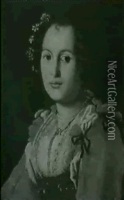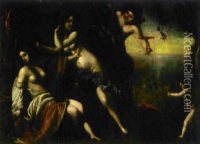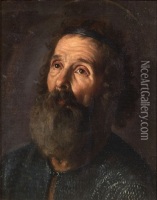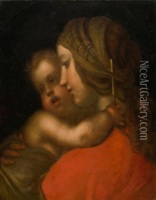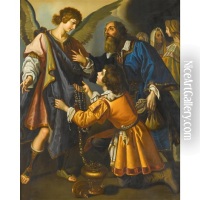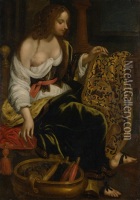Giovanni Bilivert Paintings
Giovanni Bilivert, an Italian painter of the early Baroque period, was born in 1585 in Florence, Italy. His artistic journey began under the auspices of his father, Michelangelo Tarchiani, an obscure painter from whom Bilivert might have initially learned the basics of painting. However, his primary and most influential training came from working in the atelier of Lodovico Cigoli, one of the leading artists of the time who successfully bridged the Mannerist and Baroque styles in Florentine art. Bilivert's style was significantly shaped by Cigoli's influence, as well as by his association with other contemporary artists like Cristofano Allori and Matteo Rosselli.
Bilivert's work is characterized by its intricate detail, vibrant use of color, and the dynamic composition typical of the Baroque movement. He became a master at capturing the emotional intensity of religious scenes and the delicate beauty of mythological subjects. A notable aspect of his career was his contribution to the decoration of the Chapel of the Princes in San Lorenzo, Florence, which showcases his skill in fresco and his ability to work on a grand scale.
Throughout his career, Bilivert enjoyed the patronage of the Medici family, the ruling dynasty of Florence. This relationship provided him with significant commissions that were instrumental in establishing his reputation as one of Florence's leading painters of the early 17th century. His works were not only appreciated in Florence but also gained recognition outside Italy, contributing to the spread of the Baroque style across Europe.
Bilivert served as the head of the Accademia del Disegno in Florence, reflecting his respected position in the city's artistic community. His influence extended beyond his own works, as he played a crucial role in training the next generation of Florentine artists, including the prominent painter Orazio Fidani. Giovanni Bilivert's legacy is preserved in the collections of major museums and galleries, where his masterpieces continue to be admired for their beauty and emotional depth. He died in Florence in 1644, leaving behind a body of work that remains significant in the study of Baroque art.




